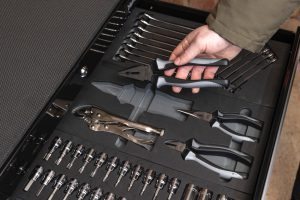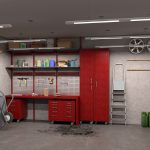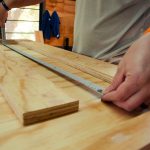Why does tool care matter?
Whether you use them for at-home DIYs or professional repairs, it’s important to care for your tools thoroughly. Proper tool maintenance helps keep overall costs down by limiting replacements, maintains workshop safety, boosts productivity, and ensures your workspace remains legally compliant.
Caring for your tools is vital for promoting a culture of workshop safety. If your tools do become worn or damaged, they’re more likely to break and cause injury. Of course, worn power tools offer the additional risk of being both an electrical and a fire hazard if they overheat.
Tools like torque wrenches or measuring devices may also need to be calibrated, while cutting and filing tools need to be kept sharp for accuracy and precision. Because of this, working with old or damaged tools can be frustrating, as they’re less likely to operate smoothly and can strain the user. Similarly, work productivity can be hindered by a lack of upkeep if an unexpected breakdown occurs. After all, nobody wants to be mid-job and find their tools falling apart on them…
If you find yourself skipping important maintenance steps as a shortcut, don’t! Neglecting your tools will only lead to more costly replacements or repairs in the long run.
In fact, if you run your own business as a tradesperson, it’s a legal requirement to keep the tools used in your workspace to a good standard. The Provision and Use of Work Equipment Regulations (1998) are designed specifically to ensure that the equipment and tools provided are sufficiently maintained and safe to use.
How can tools get damaged?
One of the easiest and most common ways for tools to get damaged is by storing them in poor conditions. If you leave them in damp vans and workshop environments, they’re likely to gather rust and corrosion as they degrade. Similarly, if your tools are all chucked on top of each other or jostled about in your van, they could be easily damaged. During hot summer days and cooler nights, large temperature changes may impact your lubricants and batteries if left in an exposed van overnight. Halfords has a huge range of secure, lockable, and organised tool containers, perfect for keeping your kit protected when not in use.
Of course, neglecting to clean your tools after use leads to a build up of grime, dust, and residue. Consequently, your tools’ performance will decline, and if you fail to lubricate necessary parts regularly, you’ll experience increased friction and overheating. Dust or metal shavings in your power tools can also impact their performance and lead to overheating.

Best practices
An efficient way to keep on top of tool maintenance is by setting up a regular schedule. By arranging checks in advance, you’re more likely to catch small issues before they develop into major faults. It can also be useful to keep a log of this, for personal and business use.
The first step to looking after your equipment is to clean it after every use. Wipe down your hand tools with a mild degreaser to remove dirt and moisture, and clear any debris from the vents of your power tools. It’s also a good idea to regularly lubricate the hinges, gears, and parts of your tools. You may even treat your tools with a lick of rust inhibitor to prevent future corrosion. Finally, remember to sharpen your blades when they get dull.
Power tools require extra attention. The main signs to look out for are damaged power cords, insulation, plugs, overheating, or cracks. If you do suspect damage, stop using the tool and seek professional support.
However, ensure that your tool maintenance is carried out only by someone trained and/or experienced to prevent further risks of injury or damage.
When to repair or replace?
Knowing whether to repair or replace your tools can be tricky, especially if you’re trying to keep costs down. However, there are important factors to consider when making your decision. Besides, it can actually sometimes cost more to have your tool repaired, so replacing is often the answer.
As a general rule, if your hand tool has structural damage, it can be unsafe to work with it, even if you patch it back together. This can look like a splintered handle to deformed blades. Again, if the tool no longer works as intended, for example, a saw’s edge is too blunt to sharpen, it will require a replacement.
If you are considering a repair job, research whether the specific part you need is even available to buy. If not, you’ll likely have no choice but to pick up a new version.
Split your tool into categories… Is it high-quality and expensive? Look at getting it repaired. Cheap or generic? Go for a replacement. Is the tool frequently used and safety-critical? Replace!

At Halfords, all of our hand tools are covered by a 2-year guarantee, meaning that if they fail within that time period, we’ll replace them. If that’s not impressive enough, our Halfords Advanced Hand Tools come with a lifetime guarantee! Please note that this does not cover rust; another reason why maintenance is vital for all your tools, no matter how premium they are.
We know our tools are made using high-quality materials and designed to last. By shopping with Halfords, you’ll likely require fewer replacements, creating a more sustainable and cost-efficient workshop.
Remember to sign up to Halfords Motoring Club to claim your welcome voucher and exclusive discounts, and use them on your brand new set of workshop tools!



